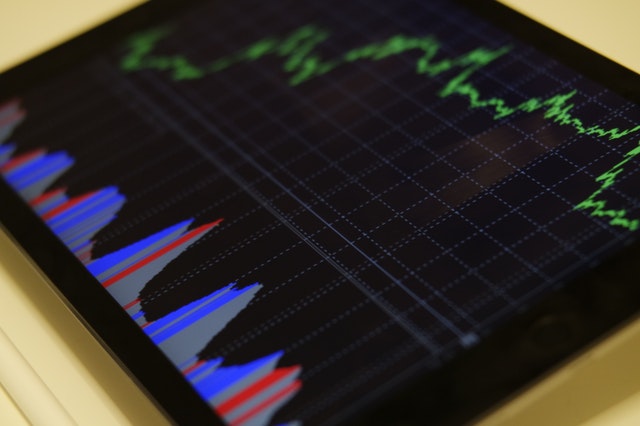As we began the year 2020, it was with a certain satisfaction that we had completed 2019 with double-digit performance, reaching new market highs around mid-February, and a promising outlook for the year ahead. Unemployment was at a record low, the economy was earning a reasonable GDP, and geopolitical considerations (Phase 1 of China trade deal) were moving toward better growth and commerce.
By mid-March, events had taken over, and the global economy was being challenged by the novel coronavirus (A.K.A. Covid-19). Markets were panicked by concerns of a pandemic resulting from the virus, and markets around the world responded with ever-increasing volatility. The S&P 500 Index was at a record high of 3386.15 on February 19th. By March 23rd, the Index had fallen to 2237.40, a decline of almost 34% (on a closing price basis).
The U.S. stock market fell into a bear market (a decline of greater than 20%) in the shortest time ever—just 22 days—and continued even further, dropping 30% in a record 30 days. From the March lows, the markets (as indicated by the S&P 500) have since rebounded 675 points (to April 30, 2020), an increase of 30% from the recent lows. This was indeed a fast bear market downturn, followed by an equally fast market upturn bull market.
What does all this mean to the economies of the world along with their stock and bond markets? Where do we go from here, and how should we be dealing with this new paradigm? First, let’s review some of the economic conditions currently.
Economy:
The condition of the world economies is being dictated by the governmental response to the coronavirus. For the most part, there has been a global shelter-in-place to minimize the transmission and re-transmission of the virus.
Here are some highlights and considerations of the global economy in light of the pandemic:
- In an effort to minimize social contact, businesses are being closed and staff are being laid off. No large group activities from sports to entertainment. Even the Olympics has been postponed.
- Current domestic unemployment for March came in at 4.4%. Unemployment claims over the last six weeks have topped 30.6 million people domestically. It is forecast that the unemployment rate will be at 15% by June.
- With unemployment rocketing higher, the consumer is pulling back in their spending. The consumer makes up roughly 67% of GDP. As a result, GDP declined -4.8% for the first quarter; and the forced closure of businesses across the United States and surge in unemployment will force U.S. GDP growth to contract -30% in the second quarter (on an annualized basis and possibly more) and -5% overall in 2020.
- Congress approved a stimulus package (called the CARES Act, Coronavirus Relief Law) at a cost of $2.2 trillion; they followed it with an additional $480 billion to add to the programs.
- The Fed has lowered interest rates drastically. Short-term T-bills are close to zero. Other central banks have followed suite by reducing rates to zero or sub-zero.
- The Fed has added a monetary stimulus at $2.3 trillion in loans to small and mid-sized businesses as well as state and local governments.
- Oil prices have declined dramatically as a result of a price war between Russia and Saudi Arabia. Prices of oil have declined from almost $62 per barrel to a recent low of $14. A 77% decline in just four months
The FPC Wealth Team’s Insights:
The U.S. and other countries have entered a self-induced recession to slow the growth of the coronavirus. As a result of closing the global economy, we are now confronted with millions of people unemployed, and many businesses, both large and small, are now shut down. This will translate into a major decline in global GDP in the second quarter of 2020.
The difficult proposition facing the global economies (and people around the world who are looking to return to “normal”) is: What will be the impact of the coronavirus, and how long will it last?
It is our belief that although the consequences of the virus will be severe and unprecedented, it will not last forever. In this environment, there will be some winners, some losers, and some that will only manage to cope. The response by governmental entities and central banks has been epic in terms of the amount of stimulus.
We anticipate that this infusion of capital into the global economies will have the desired effect of creating a broad-based recovery, albeit over a long-time frame. In the final analysis, it will take the creation of a vaccine that will be able to give people assurance that they can go about their lives and fully restore the economies of the world.
As a final note, we feel a profound sadness for all the people that have been stricken with this virus, and a huge level of appreciation for those first responders that are providing care to those people. It is our hope that everyone remains careful and vigilant so as to avoid contracting this virus. Remember: we’re here for you! If you ever need any assistance or have questions, please don’t hesitate to reach out.
We greatly appreciate the confidence you have shown in our services. Thank you for your business!
Sincerely,
Blair McCarthy & Bijan Golkar, CFP®
Payroll Protection Program:
Congress enacted a stimulus program whereby we (FPC) applied for an SBA loan. The purpose of this program is to assist businesses to offset the negative impact of the coronavirus. As a fiduciary under federal law, we felt it would be prudent for us to advise our clients that we have applied for and were granted a Paycheck Protection Program (PPP) Loan. The nature of the program is that it provides capital to be used for payroll expenses, rent, and utilities. And in so doing, we will be able to enhance certain operational backups in staffing into the future.




